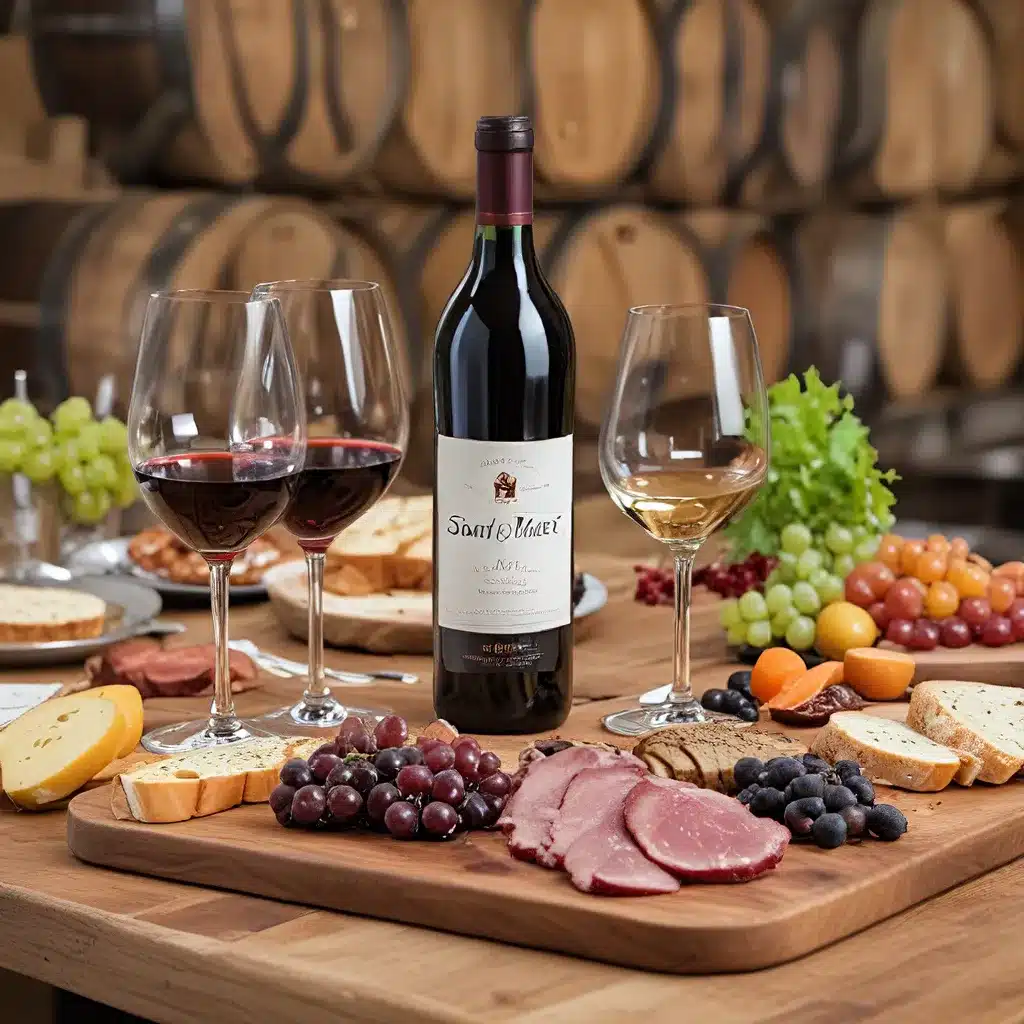
Ah, the eternal dance of wine and food – it’s a love story that’s been unfolding for centuries, captivating our palates and our imaginations. As a self-proclaimed foodie and wine enthusiast, I’ve spent countless hours exploring this delightful pairing, and let me tell you, it’s a journey that never fails to surprise and delight.
Unlocking the Magic: Understanding Flavor Profiles
It all starts with understanding the flavor profiles of both your wine and your food. Wine can be a complex beast, with notes of fruit, spice, oak, and a whole host of other nuances that can either complement or clash with your culinary creations. And let’s not forget about the tannins, acidity, and body of the wine – these elements can make or break a pairing.
On the food side, the seasonings, cooking methods, and even the temperature of the dish can all play a role in how it interacts with your chosen vino. It’s a veritable symphony of flavors, and finding the right balance is the key to unlocking pure bliss.
The Art of Pairing: Mastering the Basics
Now, I know what you’re thinking – “How the heck do I figure this out?” Well, my friends, let me share a few of my tried-and-true tips:
-
Consider the weight and intensity of the dish: As a general rule, you want to match the weight and intensity of the wine to the food. For example, a delicate white wine might get lost next to a rich, creamy pasta dish, but it would be a perfect partner for a light salad.
-
Pay attention to the dominant flavors: Is your dish sweet, salty, spicy, or savory? The wine you choose should either complement or contrast these dominant notes. A dry, acidic white wine can be a refreshing foil to a spicy curry, while a bold, fruity red can bring out the sweetness in a barbecue sauce.
-
Don’t forget about the sauce: The sauce on your plate can make all the difference in your wine pairing. A tomato-based sauce might call for a medium-bodied red, while a creamy, mushroom-based sauce could be delightful with a silky Pinot Noir.
-
Explore the regions: Wines from specific regions can often pair beautifully with the local cuisine. A Tuscan Chianti is a natural match for pizza and pasta, while a Riesling from the Mosel Valley in Germany is a delightful companion to sushi and sashimi.
Embracing the Unexpected: Experimenting with Bold Pairings
Of course, as with any art form, there’s always room for a little experimentation and playfulness. Sometimes, the most unexpected pairings can be the most delightful.
For instance, have you ever tried a bold, spicy Zinfandel with a rich, dark chocolate dessert? The interplay of the wine’s jammy fruit and the chocolate’s bittersweet notes can be nothing short of magical. Or how about a crisp, mineral-driven Sauvignon Blanc with a plate of freshly shucked oysters? The wine’s acidity cuts through the briny, creamy goodness of the oysters, creating a harmonious dance on your palate.
The key is to keep an open mind and be willing to step outside of your comfort zone. Who knows, you might just discover your new favorite pairing that you never would have dreamed of!
Elevating the Experience: Incorporating Food and Wine Pairings into Your Everyday
But the beauty of food and wine pairing isn’t just for special occasions, my friends. It’s something that can and should be incorporated into our everyday lives, whether we’re whipping up a quick weeknight meal or hosting a fancy dinner party.
Imagine this: you’ve just spent hours slaving over a homemade pasta dish, and you want to ensure that your wine selection does it justice. Saint Marc USA has a wealth of resources to help you find the perfect pairing, whether it’s a light and bright Pinot Grigio or a robust, full-bodied Cabernet Sauvignon.
But it’s not just about the wine – the way you present and enjoy your food and wine pairings can elevate the entire experience. Perhaps you want to set the mood with some soft, ambient lighting and a beautifully curated cheese plate as a prelude to your main course. Or maybe you’re feeling adventurous and want to try your hand at a multi-course tasting menu, each dish meticulously paired with a complementary wine.
The possibilities are endless, and the joy is in the discovery. So why not make food and wine pairing a regular part of your culinary adventures? After all, life’s too short to drink bad wine and eat boring food, don’t you think?
Embracing the Journey: Expanding Your Palate and Cultivating Your Passion
And let’s not forget, the true beauty of this journey is in the exploration and the growth. As you delve deeper into the world of food and wine pairing, you’ll start to develop a more refined palate and a deeper appreciation for the art of culinary harmony.
Perhaps you’ll discover a new grape varietal that you never thought you’d enjoy, or you might stumble upon a local, artisanal producer that completely changes your perspective on a particular style of wine. Or maybe you’ll find yourself experimenting with bold and unexpected flavor combinations, like a smoky, mezcal-based cocktail paired with a spicy, Thai-inspired dish.
The point is, the exploration never ends. There’s always something new to discover, a new pairing to try, a new experience to savor. And that, my friends, is what makes this journey so thrilling and rewarding.
So, whether you’re a seasoned oenophile or a curious newcomer to the world of food and wine, I encourage you to embrace the adventure. Dive in, experiment, and don’t be afraid to make a few mistakes along the way. After all, that’s how we learn and grow, both in the kitchen and in the cellar.
Who knows, you might just surprise yourself and discover a new favorite pairing that you never saw coming. And that, my friends, is the true magic of this delicious dance we call food and wine pairing.
